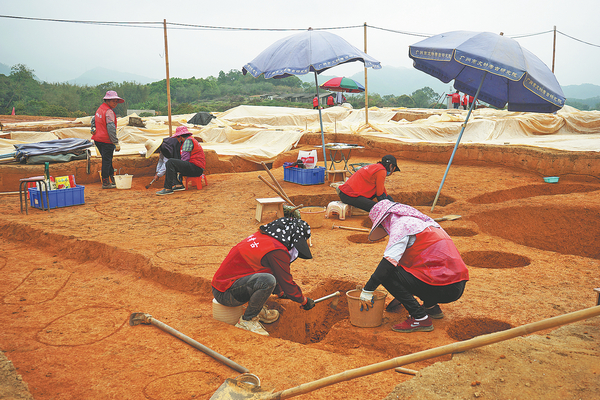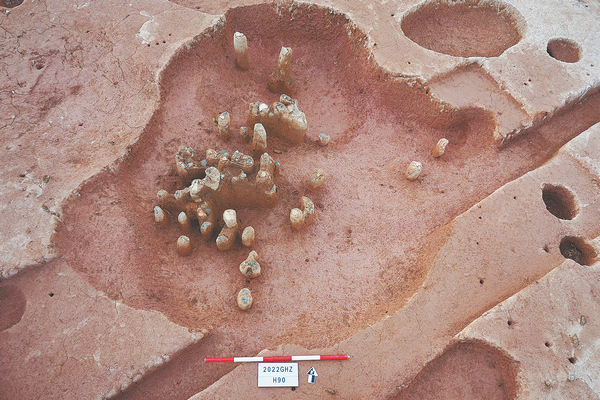

Li Yan, a scholar of cultural studies and a senior archaeologist with the Guangdong Provincial Institute of Cultural Heritage and Archaeology, says site excavators have found production tools and finished products, including grindstones, stone tools with cut marks, as well as weapons, such as dagger-axes, ivory zhang (a ritual tool), and other ritual tools.
"From this point of view, the stone production site was not an ordinary one, as the use of these products was not at the manufacturing site itself, but to supply other relatively high-level settlements in the area," he says.
The ivory zhang in Guangzhou must have come from Central China and later spread to the areas at the mouth of the Pearl River and the northern part of Vietnam, Li says.
The Shang Dynasty items have become a historical record of the sinicization process of the region surrounding Guangzhou, known as Lingnan, according to Li.
The Lingnan area, as part of China, was not started by Qinshihuang (259-210 BC), China's first emperor, but much earlier, says Li.
"The relics unearthed at Zhuyuanling site have shown that, historically and culturally, the process of sinicization of the Lingnan region started very early, and the early Shang Dynasty was a very important period for the process, with these dagger-axes and ivory zhang as carriers," he says.
"These dagger-axes and ivory zhang had obviously been localized, and only after localization could they spread outward," he says.

Li said he believed more historical and cultural remains would be found and more relics be unearthed in the following months, with the rapid economic development in the eastern part of Guangzhou.
Meanwhile, archaeological excavations at the Zhuyuanling site have, so far, uncovered nearly 1,500 Shang-era ash pits of different shapes and sizes.
Some of the pits, with regular shapes and depths exceeding 1 meter, should be classified as storage pits or pits for sacrificial purposes.
Excavators have also discovered more than 1,800 column holes of different sizes and depths that are considered to be related to stilt-style architecture or wood frame architecture.
Archaeologists have also found 25 pits of varying lengths and depths on the site. And they might be related to the natural or artificial water supply and drainage in the production process and daily life of our ancestors, archaeologists say.
zhengcaixiong@chinadaily.com.cn